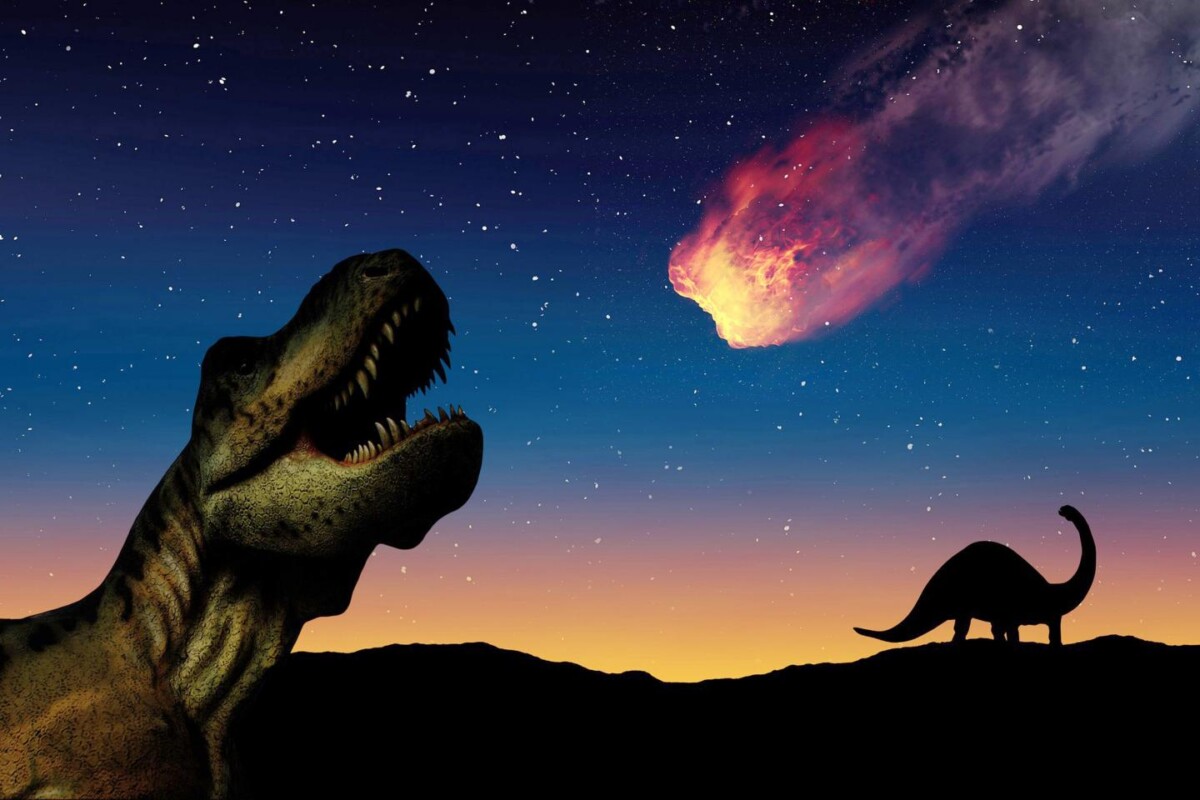A new study reveals the possible origin of the devastating rock that crashed to Earth 66 million years ago.
About 66 million years ago, an immense rock stormed off the earth. A rock about 10 kilometers in size bore into modern-day Mexico, creating a 200-kilometer-wide crater known as Chicxulub Crater. The devastating impact brought the reign of the mighty dinosaurs to an abrupt and fateful end. There is even talk of a mass extinction: 75% of all species on earth became extinct. The big mystery has always been where exactly that catastrophic stone came from. And now scientists think they have found an answer.
Out of space
What researchers have agreed for a long time is that the culprit came from outer space. In addition, it is often said that it was a planetoid that gave rise to the mass extinction. But researchers from a new study think otherwise. In their study they managed to trace the origin and the journey of the catastrophic object. And according to them, it was not a planetoid, but a comet that would have killed the dinosaurs.
Comet
Using static analysis and gravity simulations, the researchers show that a boulder from the Oort cloud (a supposed cloud of many billions of comet-like objects around the solar system) was ejected from its orbit during its flight through Jupiter’s gravitational field. The object then headed for the sun, breaking the rock into pieces. “Actually, Jupiter acts like a kind of pinball machine,” outlines researcher Amir Siraj. Jupiter kicked this incoming comet into a different orbit, bringing it very close to the sun. Then these large comets break into smaller comets as they approach the sun. This drastically increases the chance that these smaller comets will hit Earth. ”
Element
According to the researchers, a debris of this comet from the Oort cloud could well have killed the dinosaurs. The team’s calculations show that the chance that the broken comets will hit Earth increases by a factor of 10. Moreover, the newly sketched image corresponds to the age of the Chicxulub crater. And that means that researchers have now found a very credible explanation for the origin of the devastating impact. “Our study provides a plausible explanation for the catastrophic event,” said researcher Avi Loeb. “We show that if an object comes close to the sun, it can disintegrate. This can then lead to the kind of impact that killed the dinosaurs. ”
New life
One’s death is the other’s bread. With the disappearance of dinosaurs and large marine reptiles, among other things, room was created for the evolution of other species: mammals and eventually humans. How that life could unfold afterwards? In fact, the crater was colonized by surviving species. Thus life in the Chicxulub crater returned within a few months to years. Subsequently, the crater consisted of a new, thriving ecosystem some 30,000 years after impact. Phytoplankton supported a diverse community of organisms in the surface water and on the sea floor. Evolution then resulted in a large number of new species.
But that’s not all. Adding further support to the researchers’ theory are remnants of carbonaceous chondrite (a rare and primitive type of rock that has a chemical composition very similar to that of the sun and the early solar nebula) found in Chicxulub crater. Only one-tenth of all asteroids in the asteroid belt – which is roughly between the planets Mars and Jupiter – are made up of carbonaceous chondrite. On the other hand, it is believed that the oldest comets consist mainly of carbonaceous chondrite.
Terrestrial
The researchers plan to investigate other craters as well. According to them, it could well be that more impacts on Earth were caused by comets from the Oort cloud. Debris could even hit Earth once every 250,000 to 730,000 years, the team said. To test their hypothesis, the researchers also want to study craters on the lunar surface to try to determine the composition of impacting meteorites. Space missions that sample comets can also play an important role.
Vera Rubin-observatorium
Finally, the researchers want to enlist the help of the Vera Rubin Observatory. This observatory is currently under construction in the Chilean Andes and will be fully operational from 2022. Among other things, the telescope will observe the outer regions of our solar system and will image the visible sky from the southern hemisphere every three nights for ten years. This will yield an enormous amount of data that will enable new ways of astrophysical research. Moreover, this will also shed new light on this as yet unknown vast area. In this way, the researchers hope to collect more data on long-traveling comets. “We should then see smaller fragments coming to Earth more often from the Oort cloud,” Loeb asserts.
Understanding where the meteorite that carved Chicxulub Crater came from is not only crucial to solving one of the longest-standing mysteries in Earth’s history, the researchers say. It also provides us with more insight into whether, when and how such an event could threaten our planet again. Fortunately, scientists are currently doing everything they can to map dangerous earth-shearers. Because it is clear that stones from space can pose a serious threat to the earth. At the moment, however, we have nothing to fear. Because no earth-shaver we know now will pose a danger to the earth in the coming century.
–
–
Keep amazed ✨
Receive the most beautiful space photos and interesting popular science articles every Friday. Get the free Scientias Magazine together with 50,000 others.

;Composite=(type=URL,url=https://images.radio-canada.ca/v1/assets/elements/16x9/outdated-content-2015.png),gravity=SouthEast,placement=Over,location=(0,0),scale=1)
